Orthochromatic — It's in the Clouds
January 20, 2012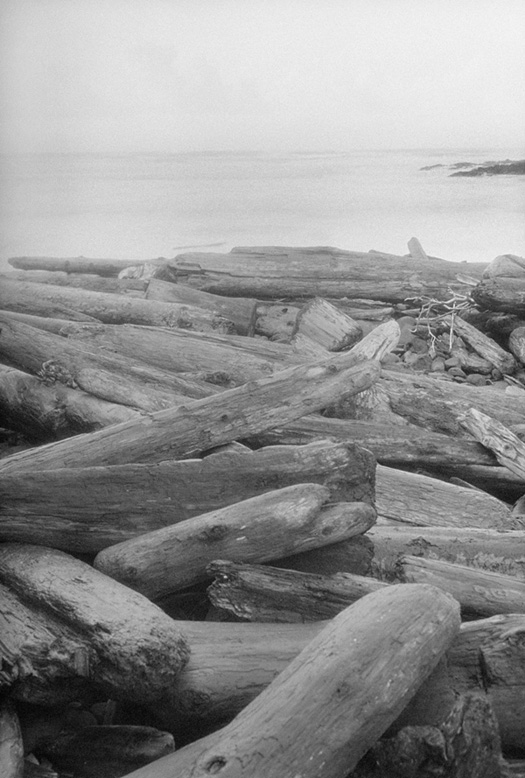
For the first fifty years of photography, from Fox Talbot at Lacock Abbey to when Josef Maria Eder first put erythrosin in a silver bromide emulsion, photographers lived within the constraints and expectations of the colorblind emulsion. "Colorblind" may seem like a non sequitur when talking about B&W film, but of course it matters when everything depends on shades of gray to interpret reality.
One of the things that photographers and viewers of photography lived with was the lack of clouds in the sky. The UV and blue light overwhelmed everything else in a negative — resulting in the characteristic bleached skies. Clouds had always been an important element in art. The Dutch landscape painters in the 1600's created clouds of such majesty you believe there are gods in the heavens. Clouds were sorely missed from photography.
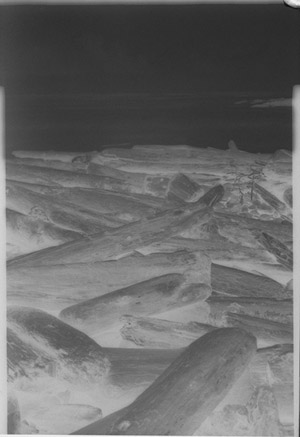
"TLF#2" colorblind emulsion, f/11, 3 sec.

Orthochromatic emulsions changed all that and the crowd went wild. Clouds, clouds, and more clouds. The convention flipped so that clouds were 'required'. If the negative of a particular landscape came with a clear sky, another negative of nice clouds was sandwiched in during printing. A few commercial photographers had 'signature' clouds.
And, there were many series of photographs of only clouds. There was a reason beyond mere art for this.
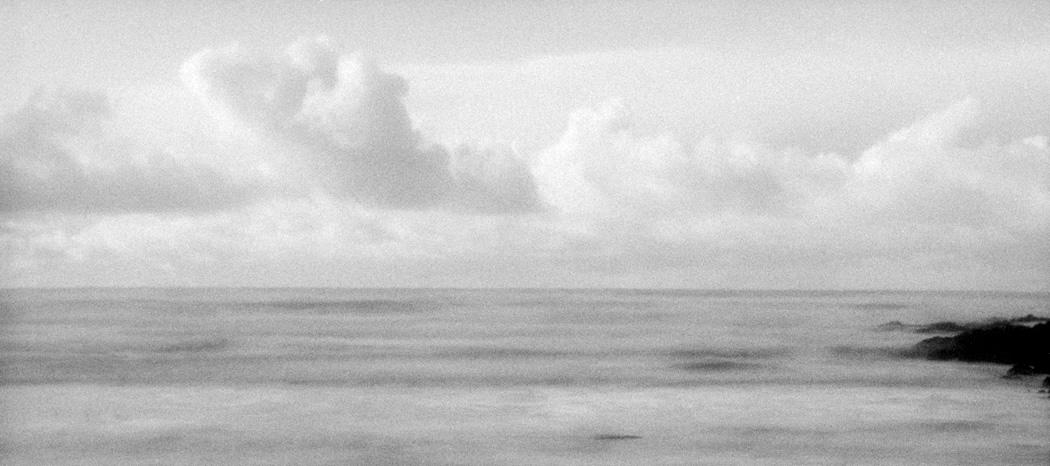
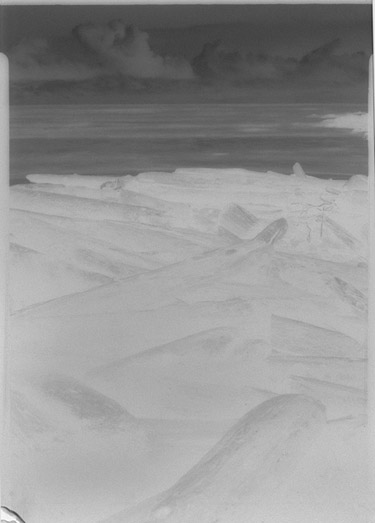
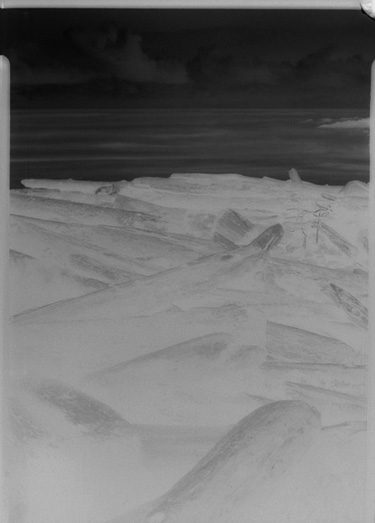
It turns out that when you use a yellow filter to put the clouds in the sky, you lose in the shadows. The far left negative (and print above) was properly exposed for the sky (f/11, 4 sec) but picked up almost no detail in the driftwood. The denser negative and print below (f/11, 8 sec) barely picked up additional shadow detail, yet highlight detail ended up a little blocked. And, of course, clouds are all about luminance.
"TLF-Ortho, v.1" (i.e. "TLF#2" with Erythrosin B and pink food dye.) Medium yellow/Wratten K2 filter, a.k.a. Yellow 2 (8).
Baby Graphic negative (2¼ x 3¼ inch/ 6 x9 cm)
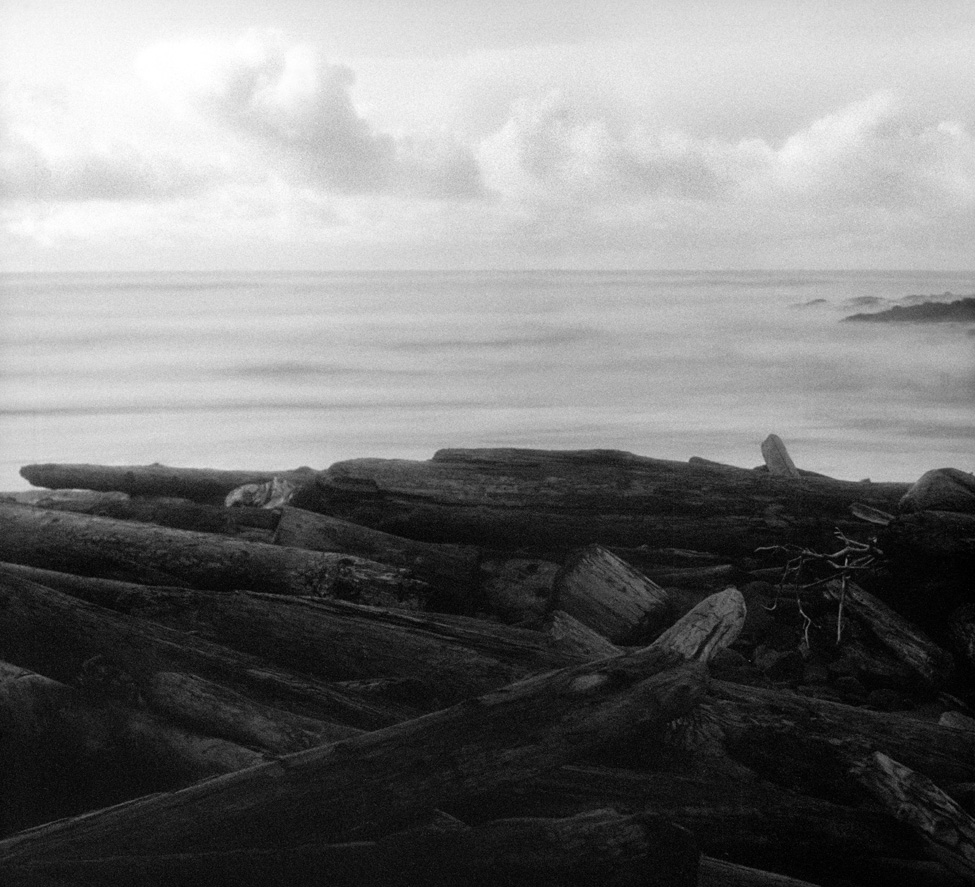
To be fair to artisan emulsions, this was an atrociously difficult lighting situation. It was very late in the afternoon in January. The sky was still bright but the driftwood was piled so that it sloped down from the west and was entirely shaded from the south by the stream bank. The lighting defeated my Canon S95, even in Raw. I had to take two separate exposures — one metered for the sky, the other for the driftwood. This was the 'new classic' situation for HDR.
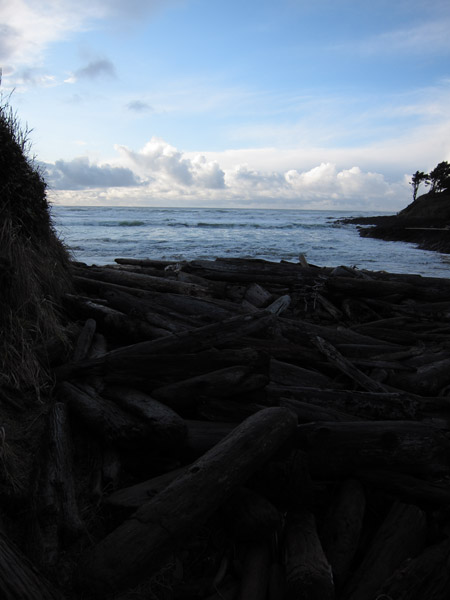
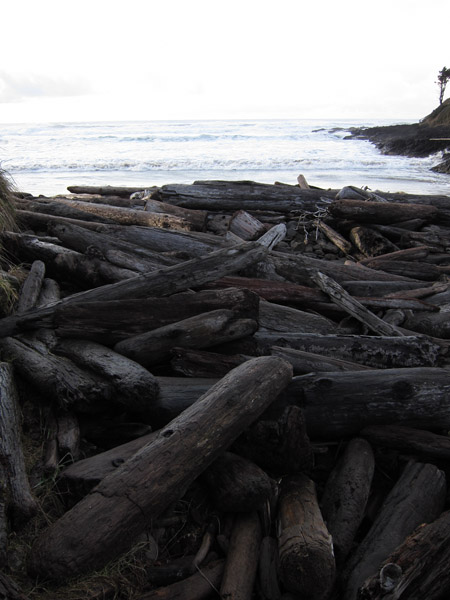
As is appropriate for time travelers, the solution is strictly 'old classic'.
Continued...